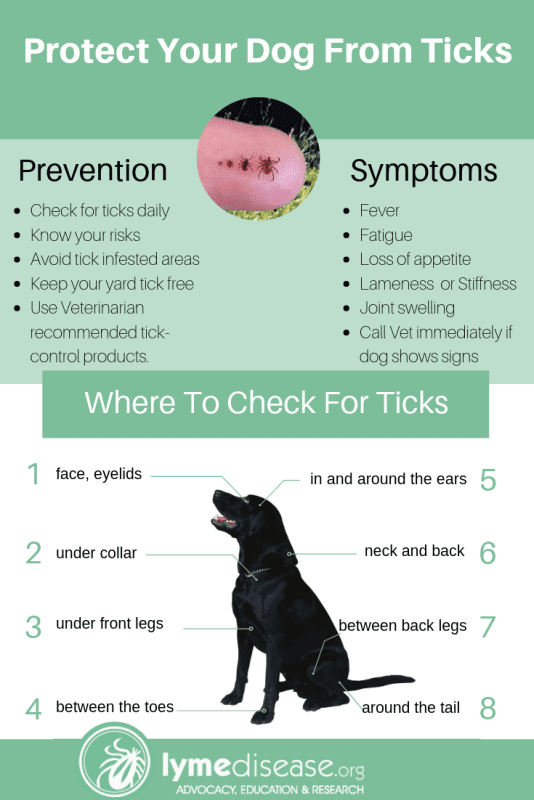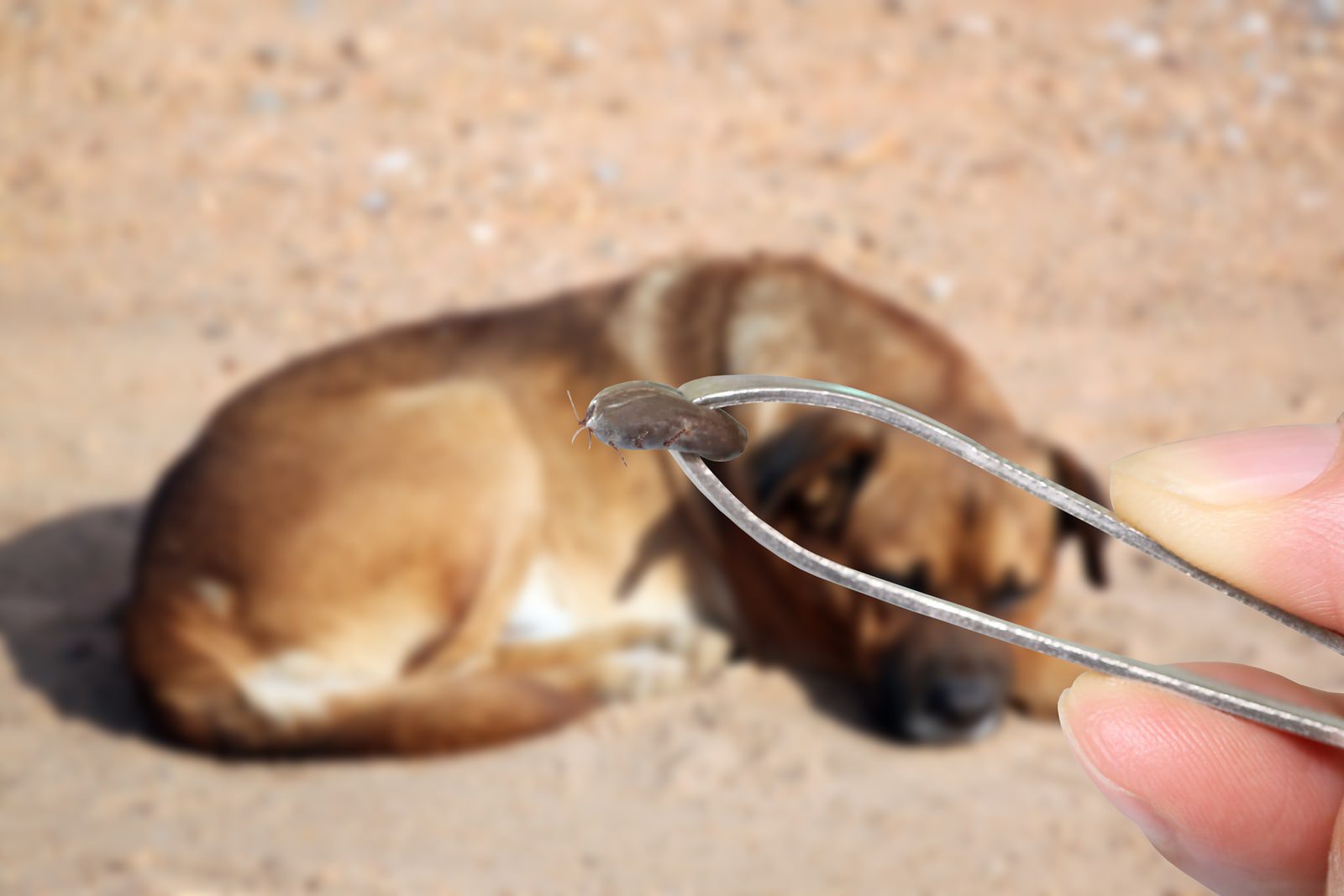
How to protect your dog from tick bites
You probably know that tick bites can be dangerous to humans. Did you know that their bites are no less dangerous for dogs? Protecting your dog from tick bites is not at all easy, but for the sake of your pet, it is definitely worth trying. Here’s everything you need to know about dogs and ticks and how to avoid these parasites.
Contents
Tick infections affecting dogs
The American Kennel Club Canine Health Foundation (AKCCHF) lists at least six tick infections or tick-borne diseases that your dog can contract from a tick bite. The following is a list of tick bite diseases in dogs and their symptoms to watch out for:
- Lyme disease. Symptoms include stiff or swollen joints, lameness, fever, fatigue, and loss of appetite. It may take several months before symptoms appear.
- Ehrlichiosis of dogs. The AKCCHF calls it one of the most dangerous tick-borne diseases in dogs. As with Lyme disease, it can take months for symptoms to appear. These include fever, runny nose and discharge from the eyes, depression, loss of appetite, weight loss, swelling of the extremities, bruising (petechiae), and nosebleeds.
- Canine anaplasmosis. (commonly referred to as canine fever or canine tick fever). Clinical signs to watch out for include not only fever, loss of appetite, joint stiffness and fatigue, but also vomiting and diarrhea and, in extreme cases, seizures.
- Babesiosis in dogs. This infection causes anemia, which usually presents with pale gums and weakness. In some cases, vomiting may occur.
- Bartonellosis in dogs. This disease causes fever and intermittent claudication and, if left untreated, can lead to heart or liver disease.
- Hepatozoonosis of dogs. Unlike other tick infections, this disease is not transmitted when a dog bites a tick, but rather when a dog bites a tick. A dog that has ingested a tick infected with this infection will develop a fever, muscle pain, runny nose and discharge from the eyes, bloody stools, or diarrhea.
Types of ticks that threaten dogs
 There are also many types of ticks that are found in different regions of the world and which you can meet if you find yourself in one of these areas of the globe:
There are also many types of ticks that are found in different regions of the world and which you can meet if you find yourself in one of these areas of the globe:
- Meadow tick. The most common type of tick in Europe, which is found in Western Europe and in adjacent areas of Eastern Europe.
- Australian paralytic tick. This tick, found in Australia, can cause paralysis by injecting neurotoxins into the host’s body.
- Chicken tick. This mite, which is found mainly in South America and poses a threat to poultry, can also be found on dogs and cause disease in them.
Protecting your dog from tick bites
 Although it may not be possible to completely protect your dog from ticks, you can still take steps to reduce the risk of being bitten. The American Kennel Club Canine Health Foundation (AKCCHF) recommends the use of tick protection available to your pet, such as vaccination, topical treatment, special anti-tick shampoo or collar. Pharmacies carry a variety of over-the-counter and prescription drugs, so talk to your veterinarian about the options available.
Although it may not be possible to completely protect your dog from ticks, you can still take steps to reduce the risk of being bitten. The American Kennel Club Canine Health Foundation (AKCCHF) recommends the use of tick protection available to your pet, such as vaccination, topical treatment, special anti-tick shampoo or collar. Pharmacies carry a variety of over-the-counter and prescription drugs, so talk to your veterinarian about the options available.
None of these drugs will provide you with XNUMX% protection, but you should be vigilant by regularly inspecting your pet for ticks and their bites, especially during the dangerous season. This is especially important for dogs that spend a lot of time outdoors or in potentially tick-infested areas. Get in the habit of checking your dog daily for ticks by feeling his coat and skin with your fingers and looking for small lumps. By combing your dog’s coat, you can also catch any parasites that haven’t yet burrowed into the skin. If you find a tick, it should be removed immediately. Although ticks can live everywhere, including in your backyard, they are especially prevalent in wooded areas and fields, so if you live near a forest, field, or take your dog on a hike, be sure to check it every night upon your return. home or camping.
Since some symptoms are sometimes difficult to attribute to a specific disease, and external signs sometimes take a long time to appear or do not appear at all, it is also a good idea to get tested for tick infections as part of your dog’s annual examination.
Removing the tick and treating the bite site
If you find a tick and are not experienced in removing it, take your dog to the veterinarian immediately. If the tick is not removed correctly, its head can come off and remain under the skin of the animal, which can lead to infection. Your veterinarian or paramedic is an expert on dogs and ticks. They will show you how to properly remove a tick from a pet so that you can do this procedure yourself in the future.
However, the mites must be removed as quickly as possible, which means that in some situations you will have to do it yourself – regardless of whether you have experience or not. When removing the parasite, protect yourself from infection by wearing disposable gloves. Using tweezers, grab the tick as close to the skin as possible and slowly pull it out, being careful not to squeeze the body. While you may have heard of tips for removing ticks, such as twisting, suffocating with alcohol or another drug, or lighting with a match, these methods can do more harm than good.
Once removed, place the tick in a small container of rubbing alcohol. The alcohol will kill the tick, after which it can be safely disposed of. Place the dead tick in a sealed bag before putting it in the trash, or flush it down the toilet. Under no circumstances crush the tick! So you can get infected. After removing, wipe the bite site with a disinfectant. Wash your hands thoroughly with soap at the end of the operation. Once the parasite has been removed, be sure to monitor your dog for any side effects to make sure the tick hasn’t infected it.
As you can see, a meeting between a pet and a tick can be disastrous. With a little extra effort to protect your dog, you can greatly reduce the risks associated with being bitten by these dangerous parasites.





